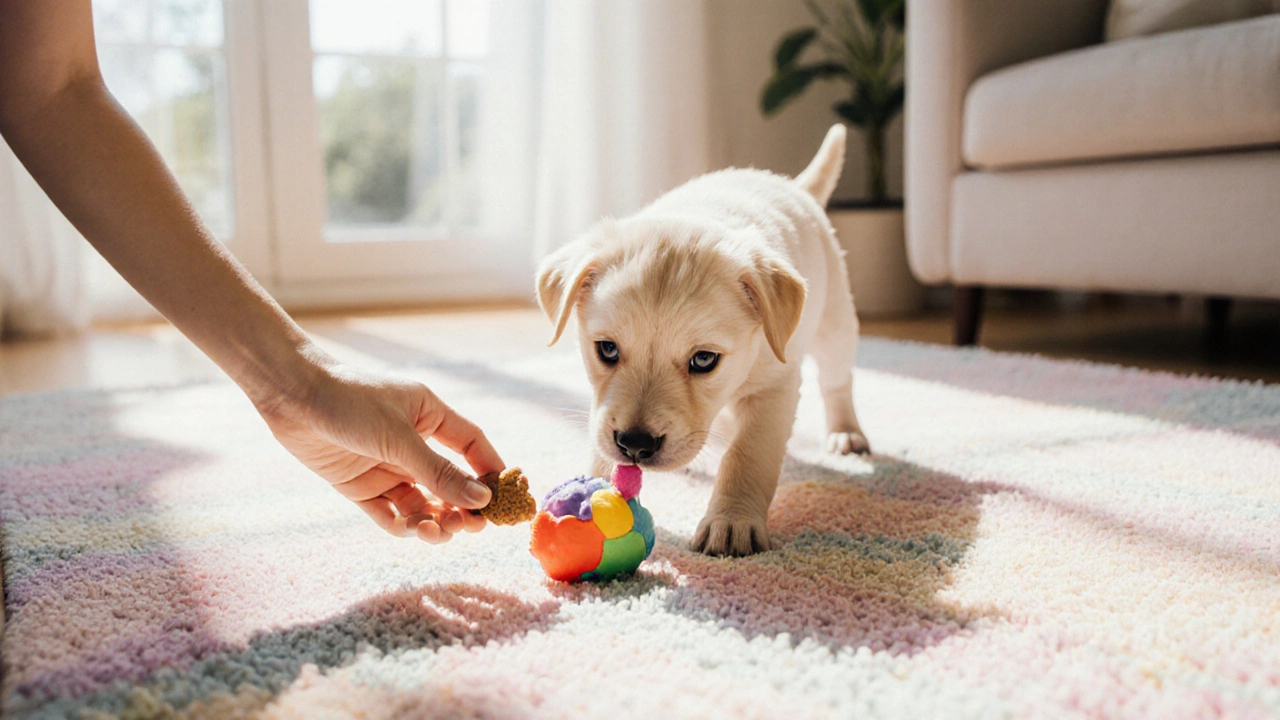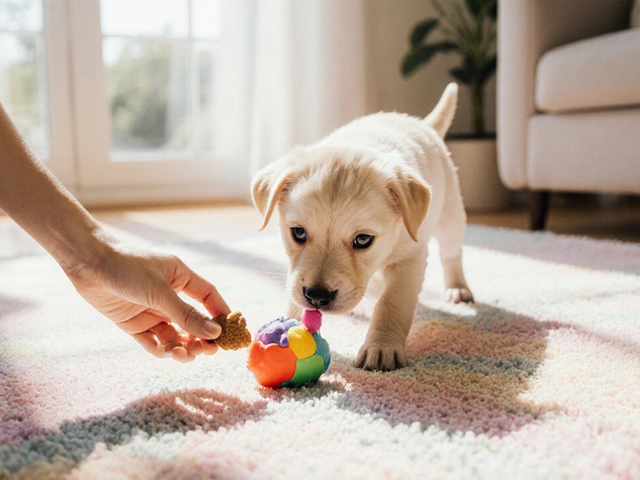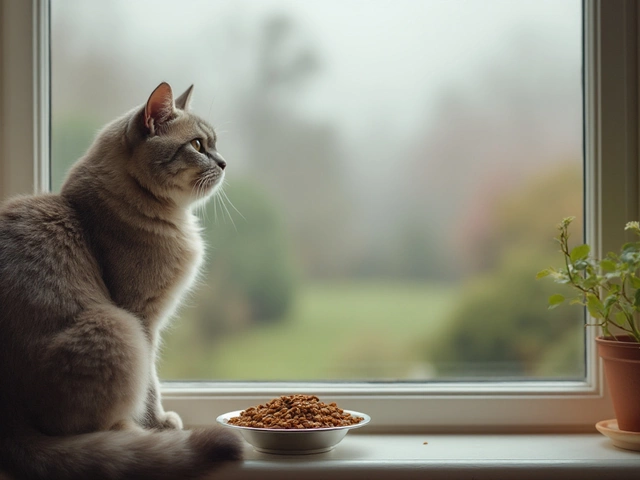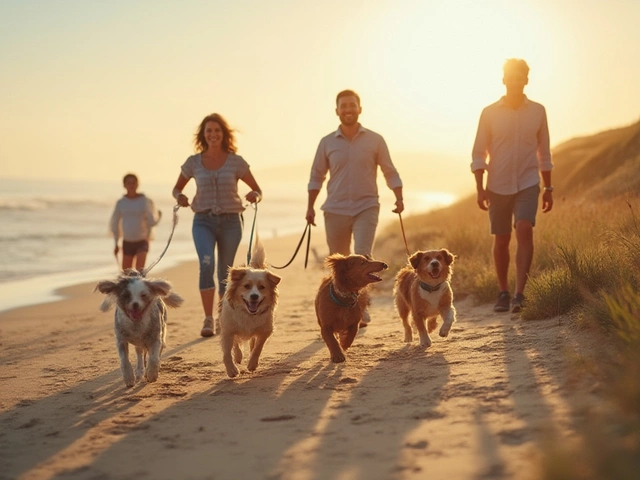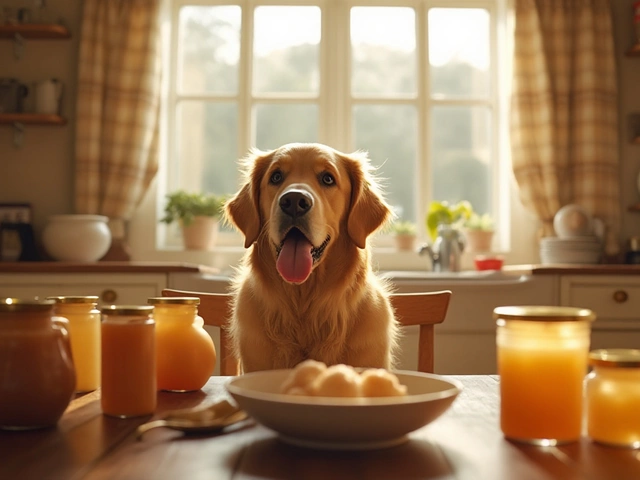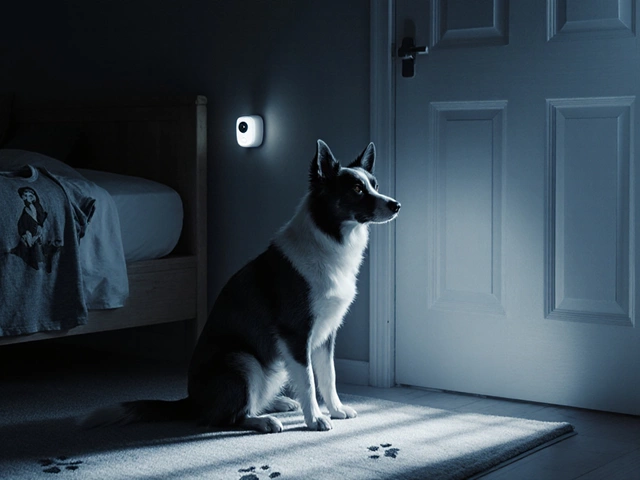Puppy Discipline Method Estimator
Find Your Best Puppy Discipline Method
Select your puppy's behavior and situation to get personalized recommendations based on the article's research.
Recommended Discipline Method
Why this method works for you:
When it comes to 8‑week‑old puppy is a young canine that is just starting to explore the world, laying the groundwork for lifelong habits. At this age, every correction shapes what they’ll expect from you and from themselves. Below you’ll find a step‑by‑step guide that lets you address unwanted behavior without fright, while building trust that lasts.
Why Early Discipline Matters
Kids and puppies share one key trait: they learn by association. If a mishap is ignored, the brain records it as "okay"; if it’s met with consistent, gentle feedback, the brain learns the opposite. By teaching an 8‑week‑old puppy the right responses now, you avoid ingraining patterns that become tougher to break later.
Core Principles for Gentle Guidance
Before diving into specific techniques, keep these three ideas front‑and‑center:
- Consistency: Use the same word and tone for each rule.
- Timing: React within seconds of the behavior; puppies live in the moment.
- Positive reinforcement: Reward the good, not the bad.
Notice the phrase discipline an 8 week old puppy appears just once to keep the focus sharp.
Positive Reinforcement: The Foundation
Positive reinforcement is a training method that rewards desired actions with treats, praise, or play, making the behavior more likely to repeat. For an 8‑week‑old puppy, tiny soft treats work wonders because they’re quick to eat and create a clear link between action and reward.
Example: If your puppy sits on command, give a treat instantly, then add a happy "Good sit!". Over a few sessions, the puppy will sit even without the treat, seeking your approval.
Time‑Outs: A Calm Pause
Time‑out is a brief, non‑punitive break that removes the puppy from the source of excitement. It works best for behaviors like nipping or jumping. Gently guide the pup to a safe, neutral spot (like a mat) and wait 10‑15 seconds. No eye contact, no talking. When the timer ends, resume the activity as if nothing happened.
Why it works: The puppy learns that unwanted actions lead to loss of fun, not fear.
Crate Training: A Safe Space for Reset
Crate training is the practice of using a properly sized crate to teach the puppy boundaries and give them a place to settle. When a puppy tries to chew furniture, calmly place them in the crate for a couple of minutes. Afterwards, offer a chew‑appropriate toy (see next section) and praise the calm behavior.
Key tips:
- Choose a crate that allows the puppy to stand, turn, and lie down comfortably.
- Make the crate inviting with a soft blanket.
- Never use the crate as punishment; it should always feel safe.
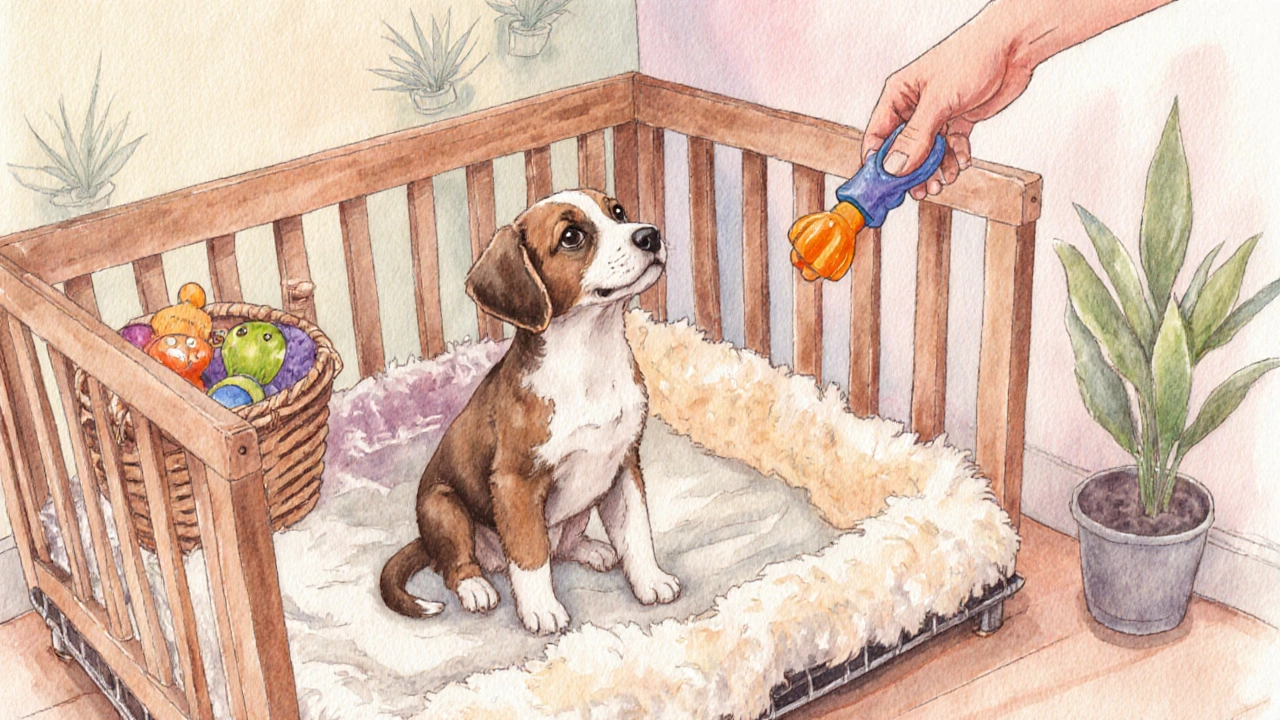
Redirect with Chew Toys
Puppy chew toy provides an acceptable outlet for a puppy’s natural urge to gnaw. Keep a basket of toys near the play area. When you catch them chewing a shoe, say "No" firmly, then hand them a toy and say "Chew this instead". Reward them when they take the toy.
Popular options for 8‑week‑old pups include soft rubber rings, rope knots, and freeze‑dried beef sticks (always supervise).
Consistent Commands: One Word, One Meaning
Consistent commands mean using the exact same word and tone each time you ask for a behavior. Choose simple cues like "Sit", "Down", "Leave it". Avoid variations such as "Sit down" or "Sit now"; puppies can get confused.
Practice in short 5‑minute bursts two to three times a day. Keep sessions upbeat and end on a positive note.
Socialization: Learning Boundaries with Others
At eight weeks, puppies are in the critical socialization window. Introducing them to new people, other vaccinated dogs, and varied environments helps them understand what’s acceptable.
When a puppy gets overly excited and jumps, gently guide them back, say "No jumping", and reward calm greetings with treats. Over time, they’ll learn the proper way to meet people.
Housebreaking: Linking the Crate to the Potty Spot
Housebreaking is a form of discipline that teaches the puppy where to relieve themselves. Use the crate to hold them when you’re not able to supervise directly; puppies naturally avoid soiling their sleeping area.
Take the puppy to the designated potty spot first thing in the morning, after meals, and after play. Praise loudly when they go in the right place - the praise itself becomes the reward.
Creating a Reward Schedule
Early on, give treats every time a desired action occurs. After a week, transition to a variable schedule: reward 80% of the time, then 50%, then just on special occasions. This mimics real‑world reinforcement and prevents the puppy from expecting a treat every single time.
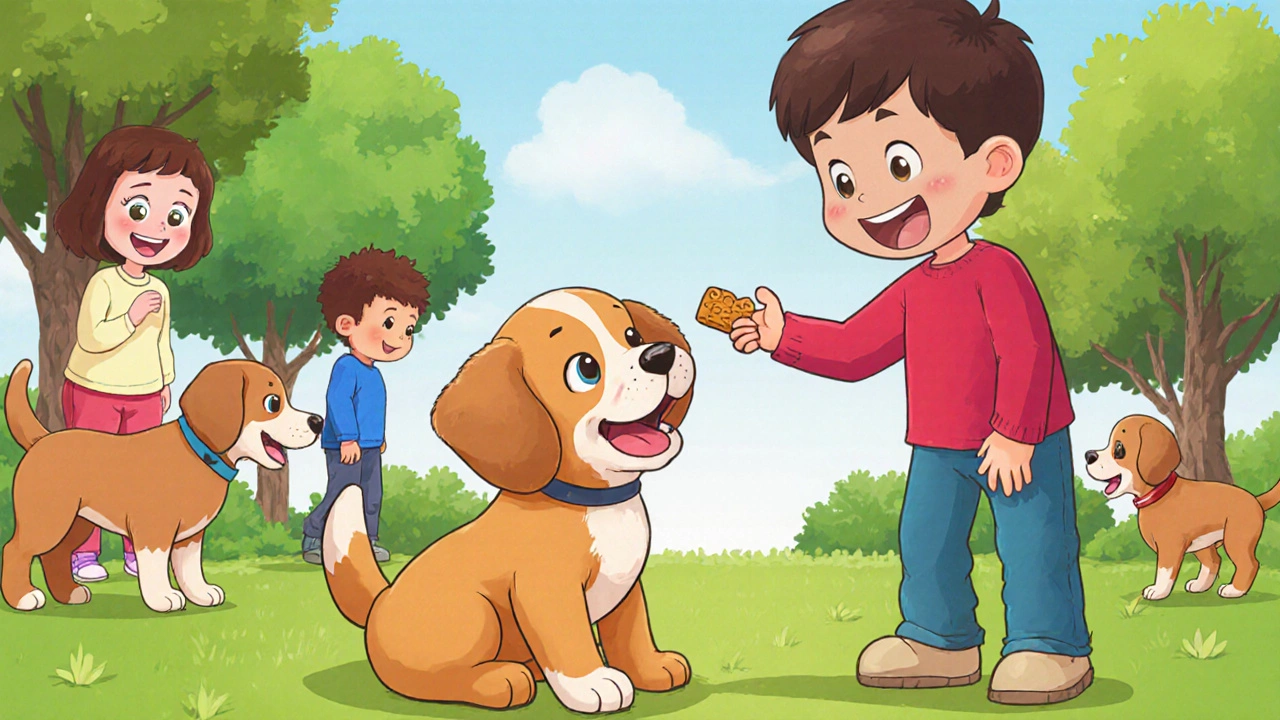
Reading Body Language Cues
Understanding a puppy’s signals helps you intervene before a behavior escalates. Signs of overstimulation include pinned ears, a stiff tail, or rapid panting. If you spot these, pause the activity, give a calm command, and redirect.
Common Pitfalls to Avoid
- Yelling or hitting: Causes fear, not learning.
- Inconsistent rules: Sends mixed messages.
- Delayed feedback: Puppy won’t connect the correction to the action.
Stick to the gentle methods above, and you’ll see steady improvement.
Quick Reference Checklist
- Use positive reinforcement for every good action.
- Apply time‑outs of 10‑15 seconds for nipping or jumping.
- Introduce a crate as a calm reset zone.
- Keep a variety of puppy chew toys handy.
- Speak one word per command, every time.
- Socialize daily, but watch for overstimulation.
- Take the puppy to the potty spot on a schedule.
- Gradually shift from constant treats to a variable reward plan.
- Read body language to pre‑empt unwanted behavior.
Comparison of Discipline Methods
| Method | Effectiveness (1‑5) | Suitable Age | Pros | Cons |
|---|---|---|---|---|
| Positive Reinforcement | 5 | All ages | Builds trust; quick learning | Requires treats or praise consistently |
| Time‑Out | 4 | 6 weeks + | Simple; no equipment needed | May be misunderstood if too long |
| Crate Reset | 4 | 8 weeks + | Provides safe space; aids housebreaking | Must be introduced positively |
| Clicker Training | 5 | 8 weeks + | Precise timing; clear cue | Needs clicker device and extra prep |
Frequently Asked Questions
How soon should I start disciplining my 8‑week‑old puppy?
Begin the moment you bring the puppy home. Short, consistent sessions work better than long, occasional ones. The first few weeks set the behavior baseline.
Is it okay to use a leash for correction?
A leash can guide the puppy gently, but never yank or pull hard. Use it to steer them toward the desired action and then reward compliance.
What should I do if my puppy keeps chewing shoes?
Redirect immediately to a chew‑appropriate toy, praise the switch, and keep shoes out of sight. Consistency will teach the pup that toys, not footwear, are for gnawing.
Can I mix positive reinforcement with a time‑out?
Yes. Use time‑outs for the moment of misbehavior, then instantly follow with a calm redirection and reward when the puppy complies. The combo reinforces the right behavior quickly.
How long should a typical training session be for an 8‑week‑old?
Keep it to 5‑10 minutes. Puppies have short attention spans, so multiple brief sessions spread throughout the day work best.
By staying consistent, using positive rewards, and giving your puppy clear, gentle boundaries, you’ll shape a well‑behaved companion who trusts you completely. The earlier you start, the smoother the journey for both of you.
